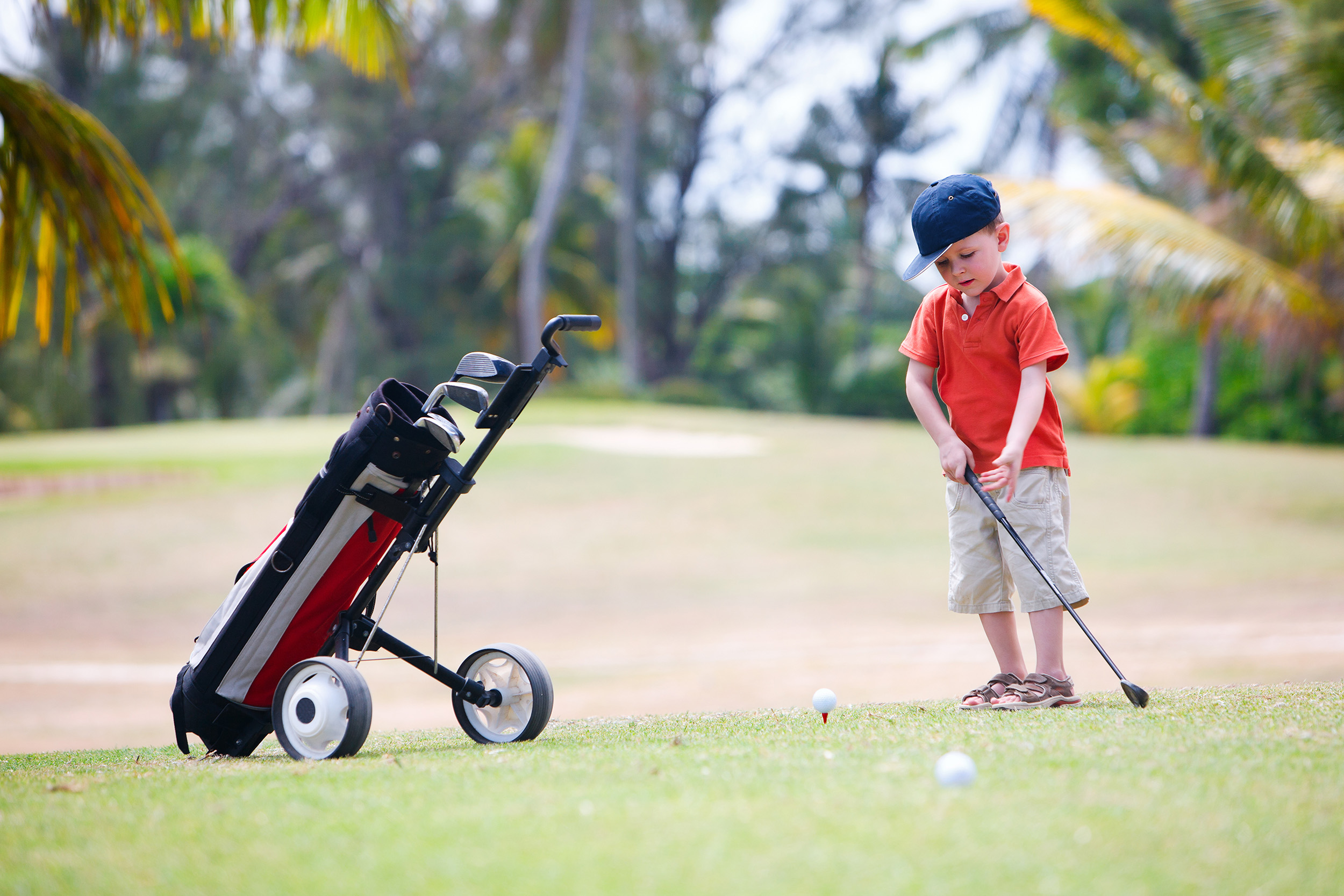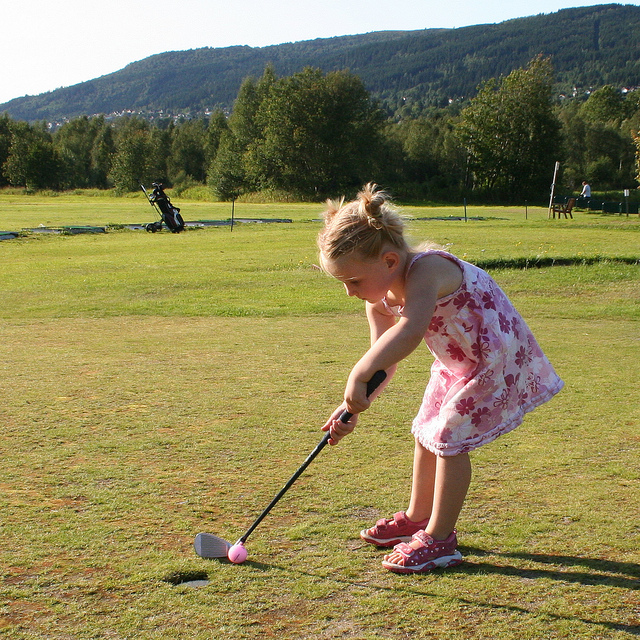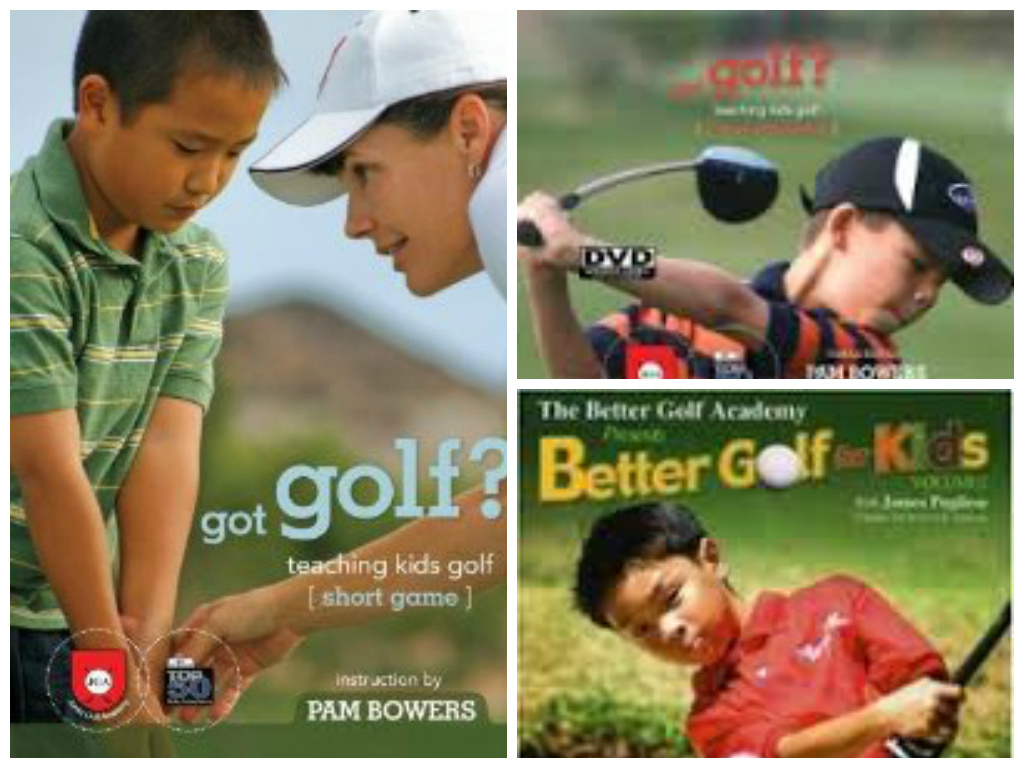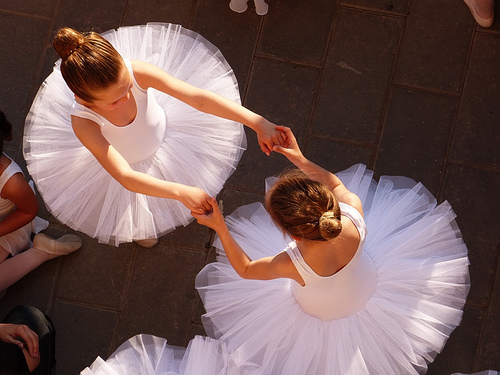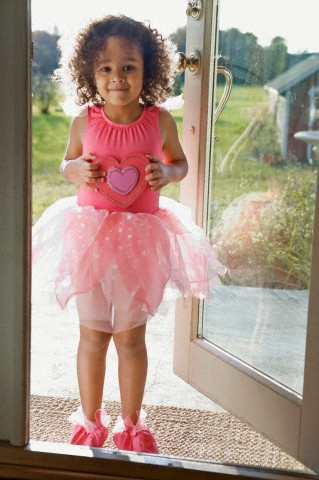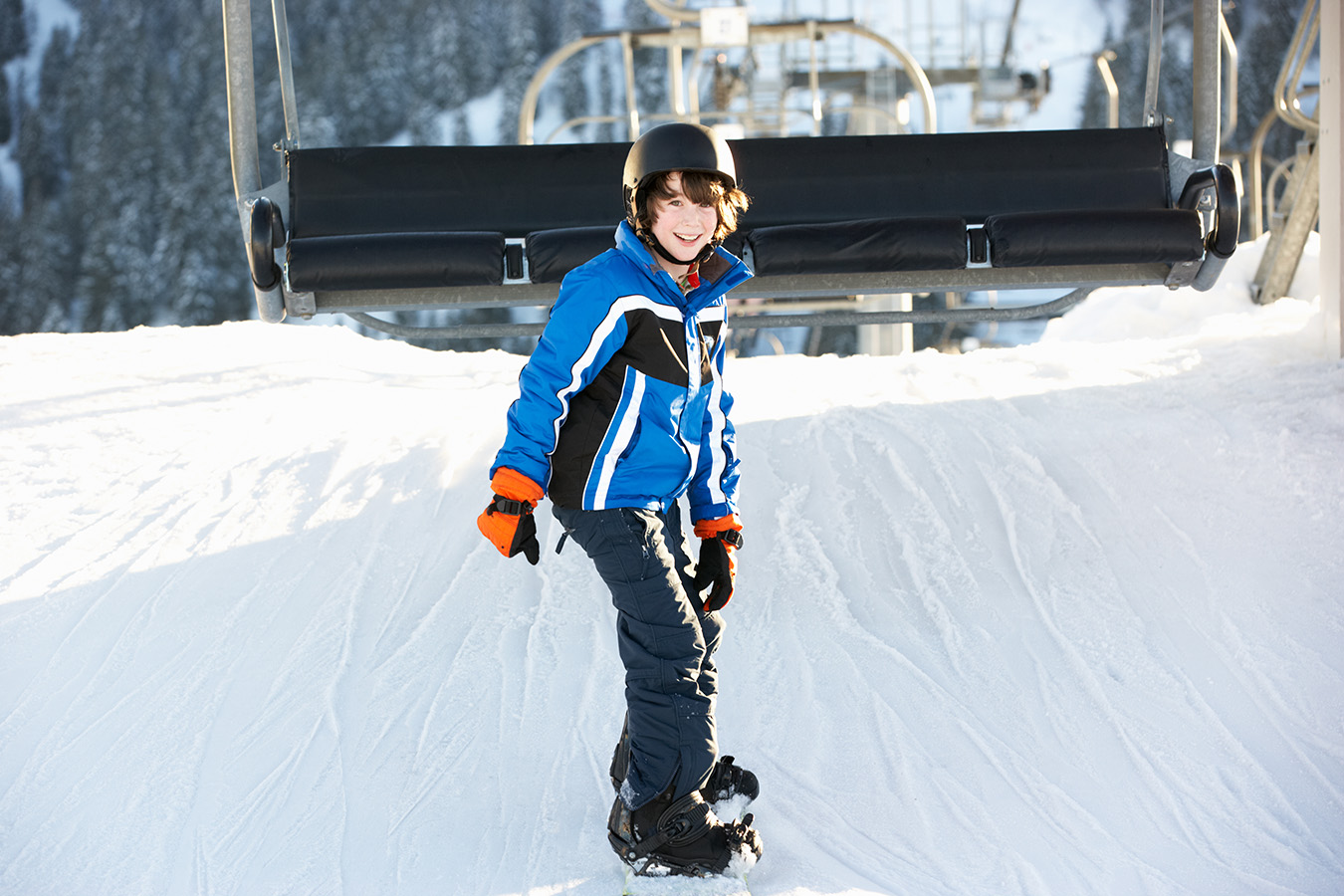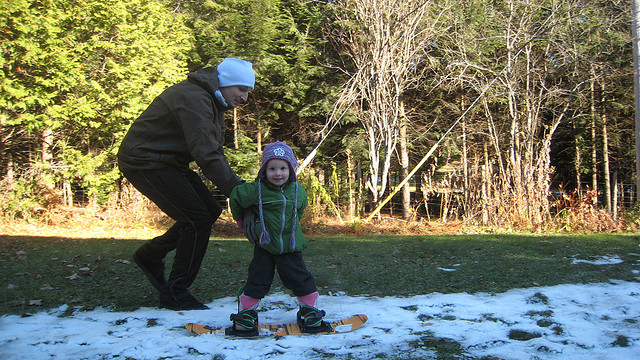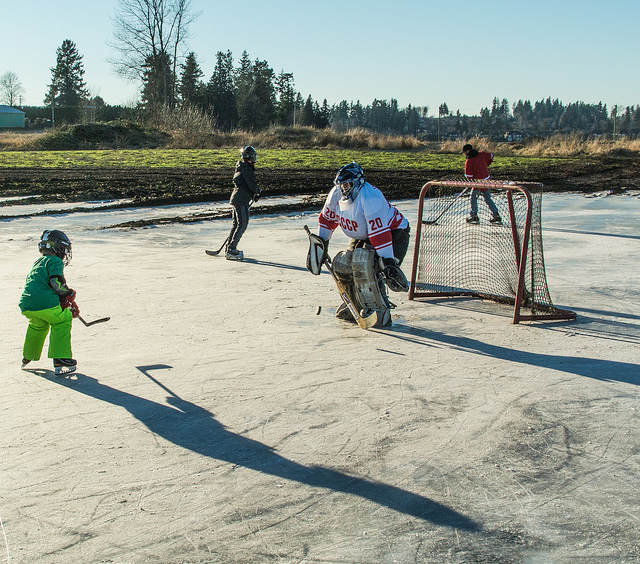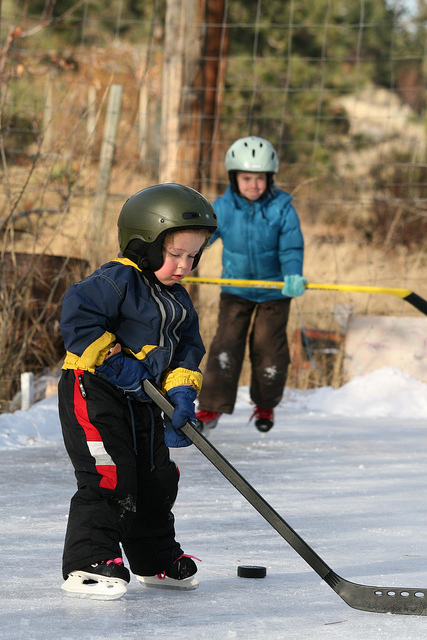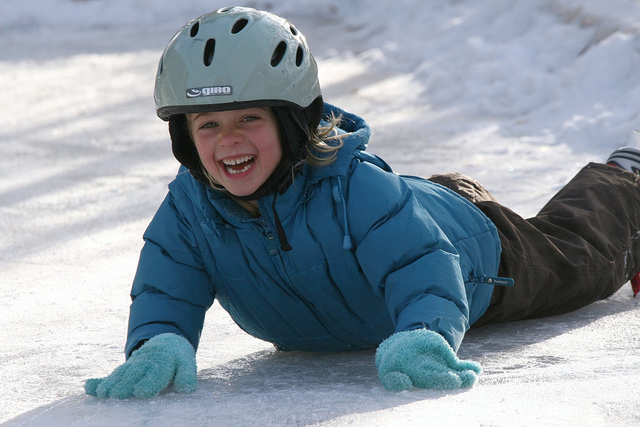Tennis can be a kind of a hard game for a small child to learn. But it is awfully fun and worth spending a bit of time trying to teach your kids how to play, even if they don’t become the next tennis superstar at least you will always have a new partner to play with if you are looking for a game.

When starting to teach kids tennis, you need to remember to keep it fun and straightforward. In recent years equipment and products (smaller rackets, tennis balls that don’t bounce as high as regular tennis balls) have been developed that are specifically made for little kids that help make the game much more enjoyable to play. There are even kits that you can buy that let you easily modify the size of a tennis court, so children don’t get tired and frustrated from running around a huge court.
When to Start
You may be wondering when you should start trying to teach your child how to play tennis. A lot depends on the child, if they have shown an interest, you can get rackets and balls that are tailored for kids four and under. If you are looking for lessons, it is possible to find people willing to give lessons to children as young as four or five years. If you are going to start this young, make sure you get a good child-sized racket and some of the high-density balls that will help avoid frustration.
Equipment
Luckily for parents, there are some really amazing products for kids less than 10 years old to help them learn to play tennis that is tailored for their size and age. It may be tempting to pull out an old adult-sized racket from your garage for your kids to practice with, but keep in mind that a larger racket may be a bit too big for a small child to handle without getting frustrated. A smaller model will help kids feel more comfortable.
Another cool innovation in the tennis world is the foam, or the low-compression felt tennis balls. What is cool about these balls is that some of them are 15% bigger than regular tennis balls, making it easier for kids to hit. They also rebound slower (some 75% slower) when they hit the racket, and they don’t bounce as high, so they are perfect for beginners and children. There is a huge range of balls for kids depending on their age and ability, so you might have to hunt around to find one that is right.
When you feel like your child is ready to use a net, you should also consider playing within a smaller area than a typical tennis court. If you are playing with an older child, you can use half a court. If you are playing with a really small child, you can get a portable mini tennis net which allows you to set up and play within a small area so your kids won’t tire themselves out chasing the ball around a full-court and they will be able to focus on building up their skills.
Getting Started
Since it is very difficult to teach a child something they aren’t that interested in it is best to introduce the game of tennis slowly and show them how fun it can be by doing some simple activities that will get them familiar with the racket, the ball, movement, and balance.
Before you even hit the court, find a yard or a park and just play around with the ball and the racket. A couple of simple things to do:
- Throw the ball to your child and have them try to hit it back to you
- Have your kids try bouncing a ball on the ground and then catching it
- See if they can walk along a line with the ball on their tennis rackets
- You can try hitting the ball back and forth with your kids with no net, you don’t need to worry if the ball bounces more than one time before they hit it.
- Have your kids hit a ball against a wall.
- You can show them that in tennis you move around the court so you can have them practice moving in different directions holding the racket (side to side, backward and forwards, etc.)
- Keep your session or practice short, no more than half an hour for kids ages 4 to 7. If they don’t seem to be having fun, stop, and try again another day. The goal is to get them to want to do it again.
Etiquette and Sportsmanship
When you are ready to move onto a court, you will want to go over some of the basic etiquette to follow, especially if there are other players on the court. Depending on their age and where you are playing, you don’t need to go into too much detail and overwhelm your kids. Talk to them about some of the basic concepts, and as they progress, you can add more to the mix. This is what they need to know:
- If you are playing on a court where other people are waiting the general rule is that you should give up the court if you have been there an hour.
- Let them know that it isn’t generally a good idea to be yelling or making loud noises on the court.
- You can teach them good sportsmanship by saying “Good match” at the end of the game regardless of who wins.
- If another player’s ball comes into your court, you can stop playing and get the ball.
Simple Rules and Concepts
At this point, you can start explaining some of the rules and the object of the game.
- The object of the game to get the ball over the net before it bounces.
- To start the game, you hit the ball to the person you are playing against.
- The first shot of each game is called a serve.
- The person you are playing with will hit the ball to you and you have to hit the ball before it bounces twice.
- Hitting the ball back and forth is called a rally.
- You will score a point when the person you are playing against misses the ball.
- The person you are playing against scores a point when you hit the ball into the net.
- It takes four points to win a tennis game. Although don’t keep score at first, when they start to get the hang of it you can use a simple scoring system
The Fundamental Skills
Once kids are starting to get more comfortable with the equipment, they will be ready to learn a few basic tennis techniques. This is the time to teach them the difference between different types of shots, how to serve the ball, and begin to get a little bit more in-depth about the rules of the game. In order not to confuse your kids, here are a couple of simple things you can start with:
How to Hold the Racket
Before kids get to set in their ways, you are going to want to try to have them get their grip right. This video isn’t the best quality, but it has some good tips on how to get your child to learn the proper tennis grip:
Forehand
If your kids are able to hit the ball, you can begin to add a bit of technique to what they are able to do. To take a forehand shot, your kids should face sideways, hold the racquet in their dominant hand then swing it forward at waist level to make contact with the ball. Here is a helpful video that will show you how to do this.
Rally
A tennis rally happens when players are able to hit the ball back and forth, usually after the ball bounces. Getting a good rally going is one of the most fun parts of the game. We have found this great video by Quickstart Tennis on how to build up to a good rally with kids:
How to Serve
It might seem a little ambitious to try to teach a small child how to serve the ball, but since it is such a huge part of the game, it is never too early to introduce it as an important skill for kids. This is a great short video with good tips on how to get small kids used to the idea of serving the ball.
If you have any tips for teaching kids tennis, then please let us know in the comments below.

